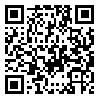Volume 15, Issue 4 (Jul & Aug 2025)
J Research Health 2025, 15(4): 393-402 |
Back to browse issues page
Ethics code: IR.MUBAM.REC.1400.019
Download citation:
BibTeX | RIS | EndNote | Medlars | ProCite | Reference Manager | RefWorks
Send citation to:



BibTeX | RIS | EndNote | Medlars | ProCite | Reference Manager | RefWorks
Send citation to:
Fazli Z, Mohammadian F, Ghorbanpour N, Firouzeh N. The Effect of Stress Caused by Occupational Noise on the Salivary Cortisol Levels of Weaving Industry Workers. J Research Health 2025; 15 (4) :393-402
URL: http://jrh.gmu.ac.ir/article-1-2569-en.html
URL: http://jrh.gmu.ac.ir/article-1-2569-en.html
1- Department of Occupational Health Engineering and Safety, School of Public Health and Safety, Bam University of Medical Sciences, Bam, Iran. & Student Research Committee, Shiraz University of Medical Sciences, Shiraz, Iran.
2- Environmental Health Research Center, Research Institute for Health Development, Kurdistan University of Medical Sciences, Sanandaj, Iran.
3- Department of Occupational Health Engineering and Safety, School of Public Health and Safety, Bam University of Medical Sciences, Bam, Iran.
4- Vector-Borne Diseases Research Center, North Khorasan University of Medical Sciences, Bojnurd, Iran. ,Nimafirouzeh4@gmail.com
2- Environmental Health Research Center, Research Institute for Health Development, Kurdistan University of Medical Sciences, Sanandaj, Iran.
3- Department of Occupational Health Engineering and Safety, School of Public Health and Safety, Bam University of Medical Sciences, Bam, Iran.
4- Vector-Borne Diseases Research Center, North Khorasan University of Medical Sciences, Bojnurd, Iran. ,
Abstract: (3409 Views)
Background: Machines with reciprocating movements in the textile industry make noise and stress. In response to stress, the body releases cortisol at high levels. This study was designed to investigate the effects of industrial noise on salivary cortisol and stress in textile industry workers.
Methods: This research is a quasi-experimental and cross-sectional study involving 53 workers in the weaving industry in the southern region of Iran. The workers’ stress was evaluated subjectively through the Osipow standard job stress questionnaire and objectively by measuring cortisol hormone levels in saliva samples using the cobas radioimmunoassay kit. We used the sound level meter to measure noise on two consecutive days (working day and rest day).
Results: The average noise levels of the workplace and the resting place were 92.01 and 51.52 dB, respectively. There is a significant difference in salivary cortisol levels between the working morning groups (5.596±1.74 μg/dL) and the morning resting groups (1.41±3.99 μg/dL) and between the working evening (5.4593±1.72 μg/dL) and the resting evening (3.5519±1.43 μg/dL) groups. The salivary cortisol levels were significantly higher in both groups on working days than on rest days. The workload score in the questionnaire revealed a significant difference between the two groups of men and women regarding job stress (P=0.006).
Conclusion: The results show that workplace noise can have a negative effect on cortisol regulation and cause stress. It is believed that this disorder is related to increased sensitivity to sound. Therefore, noise exposure should be recognized as a nonspecific stress that activates the autonomic nervous system.
Methods: This research is a quasi-experimental and cross-sectional study involving 53 workers in the weaving industry in the southern region of Iran. The workers’ stress was evaluated subjectively through the Osipow standard job stress questionnaire and objectively by measuring cortisol hormone levels in saliva samples using the cobas radioimmunoassay kit. We used the sound level meter to measure noise on two consecutive days (working day and rest day).
Results: The average noise levels of the workplace and the resting place were 92.01 and 51.52 dB, respectively. There is a significant difference in salivary cortisol levels between the working morning groups (5.596±1.74 μg/dL) and the morning resting groups (1.41±3.99 μg/dL) and between the working evening (5.4593±1.72 μg/dL) and the resting evening (3.5519±1.43 μg/dL) groups. The salivary cortisol levels were significantly higher in both groups on working days than on rest days. The workload score in the questionnaire revealed a significant difference between the two groups of men and women regarding job stress (P=0.006).
Conclusion: The results show that workplace noise can have a negative effect on cortisol regulation and cause stress. It is believed that this disorder is related to increased sensitivity to sound. Therefore, noise exposure should be recognized as a nonspecific stress that activates the autonomic nervous system.
Type of Study: Orginal Article |
Subject:
● Health Systems
Received: 2024/06/10 | Accepted: 2024/10/16 | Published: 2025/07/1
Received: 2024/06/10 | Accepted: 2024/10/16 | Published: 2025/07/1
| Rights and permissions | |
 |
This work is licensed under a Creative Commons Attribution-NonCommercial 4.0 International License. |









